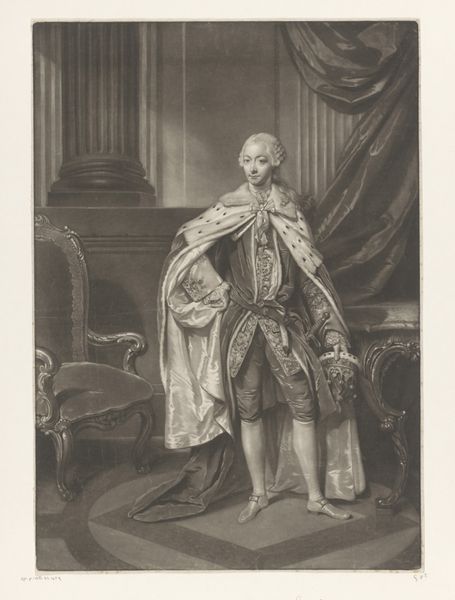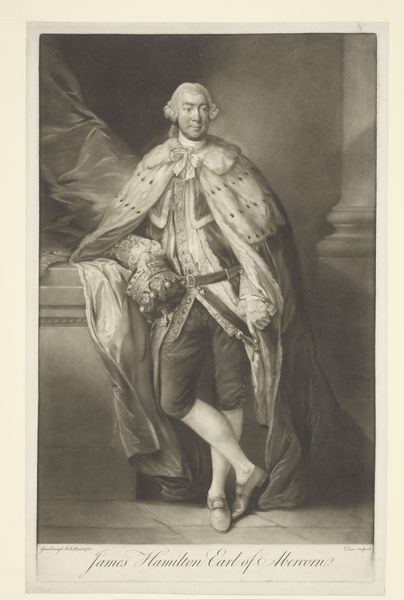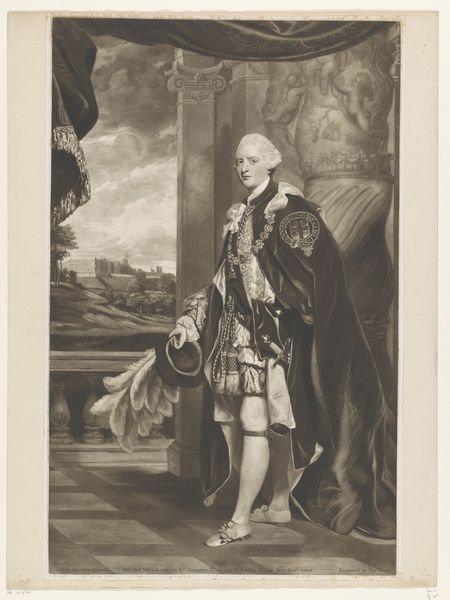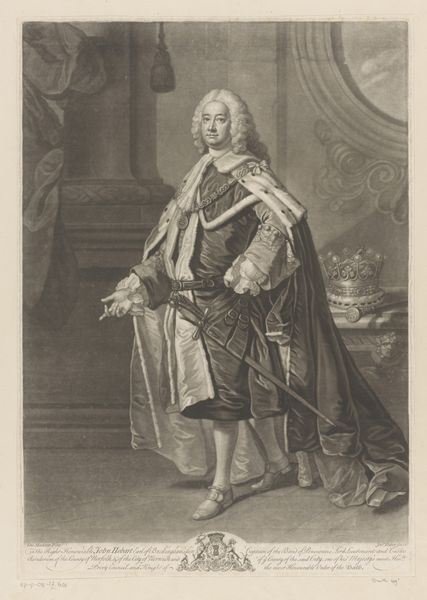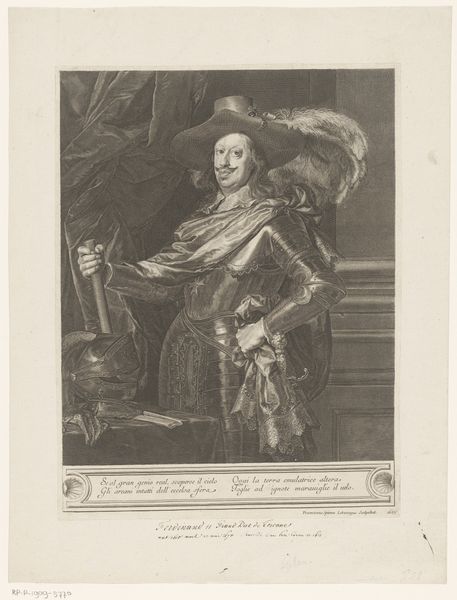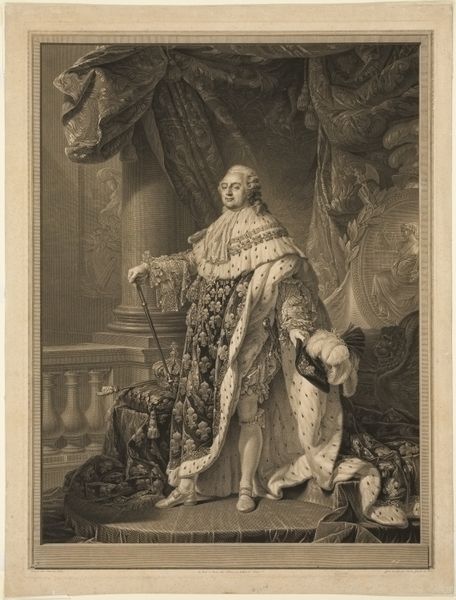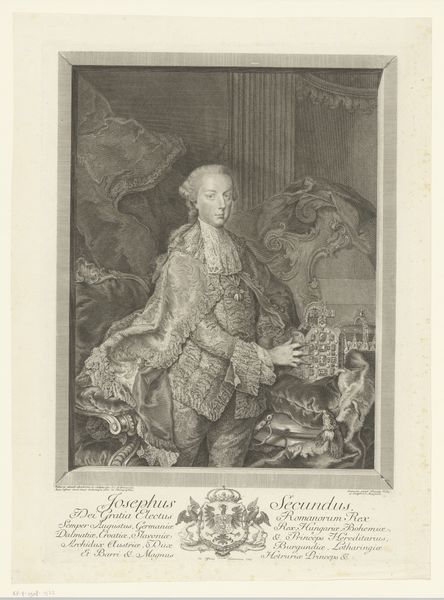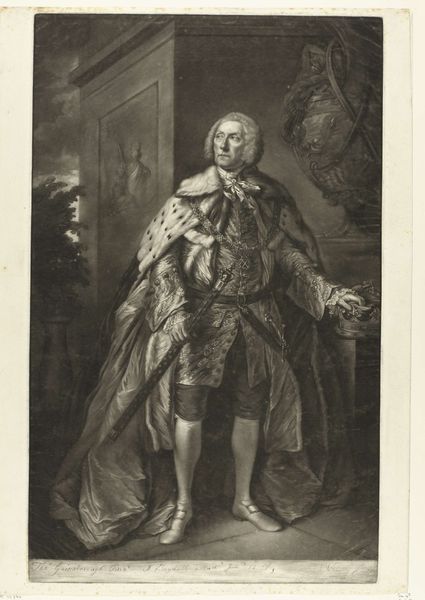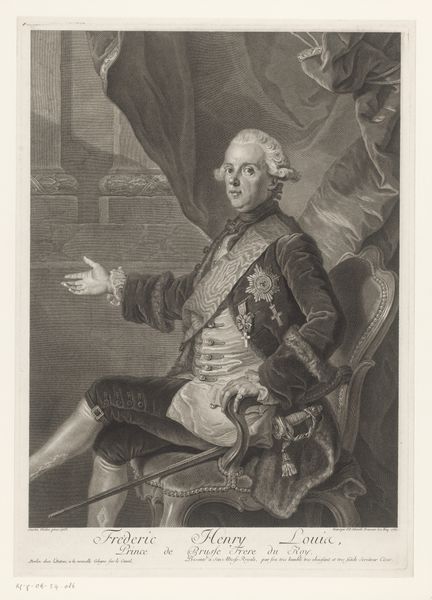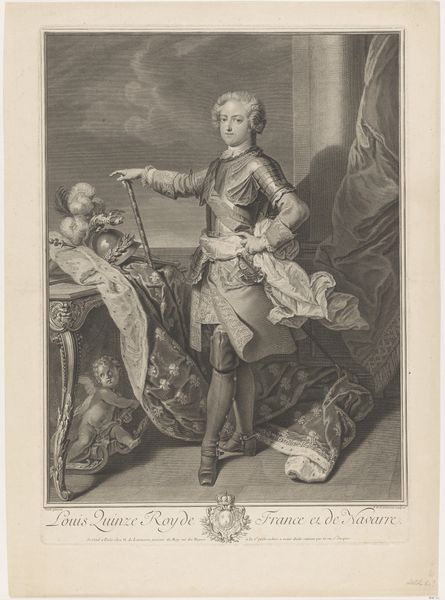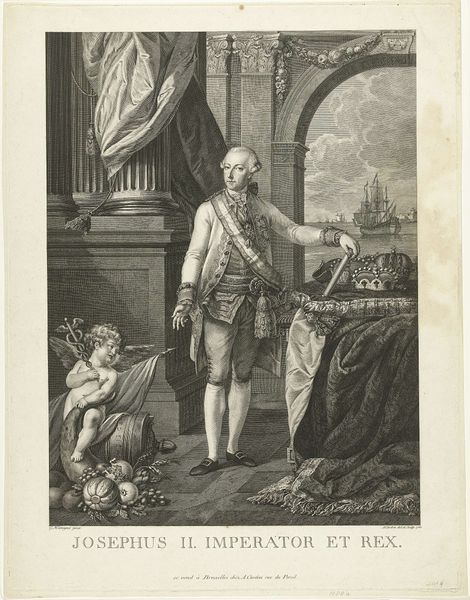
engraving
#
neoclacissism
#
history-painting
#
academic-art
#
engraving
Dimensions: height 590 mm, width 381 mm
Copyright: Rijks Museum: Open Domain
Curator: Let's take a closer look at this piece entitled "Portret van George III van het Verenigd Koninkrijk," created between 1761 and 1763. It’s currently held here at the Rijksmuseum, and was made by William Wynne Ryland. Editor: Immediately, I'm struck by the rigidity, almost a frozen quality to the composition. It is formally very static, isn’t it? Despite all that ermine and elaborate detail. Curator: It certainly conveys a sense of unshakeable authority, doesn’t it? All that Neoclassical staging acts like a symbol for the weight of kingship during a pivotal era for England, particularly with rising tensions overseas that led to revolution in North America. The composition follows traditional royal portraiture but speaks of an attempt to craft a self-image of national strength during perceived threats. Editor: The use of engraving adds to this effect of almost preternatural stillness. But looking closer at the figure himself, there’s almost a kind of... vulnerability? An uncertainness even? Look at his eyes! That clashes with the symbols. Curator: Well, portraiture has often been utilized as propaganda to disseminate ideals, especially within aristocratic circles. Even in art, such depictions served to legitimize social hierarchies. By creating a tangible portrait of themselves, royal families projected narratives of invincibility throughout Europe and its holdings abroad. Ryland's piece thus fits into that lineage quite seamlessly with its emphasis on order over spontaneity. Editor: That's what the technique and the artistic strategy achieve perfectly; by imposing structure, form takes center stage instead of life. And while such formal presentation might indicate prestige for some viewers, to me this aesthetic distances emotion rather than invites compassion or understanding – ultimately resulting in what could become simple iconography lacking character development despite visual flourishes. Curator: I think, for me, the symbols do exactly as intended, echoing power structures which underpin historical narrative throughout Britain while subtly reminding its viewers—through symbolic gestures or regal apparel choice—of the nation’s enduring impact upon worldwide affairs. Editor: And on that very interesting symbolic note, I feel, we gain renewed insight by approaching the work along different trajectories. Curator: Yes, exactly, whether one views artwork through formalist readings or with an iconographer's approach – enriched perspectives about what art signifies result regardless, revealing nuanced dimensions behind history and art history both alike.
Comments
No comments
Be the first to comment and join the conversation on the ultimate creative platform.
